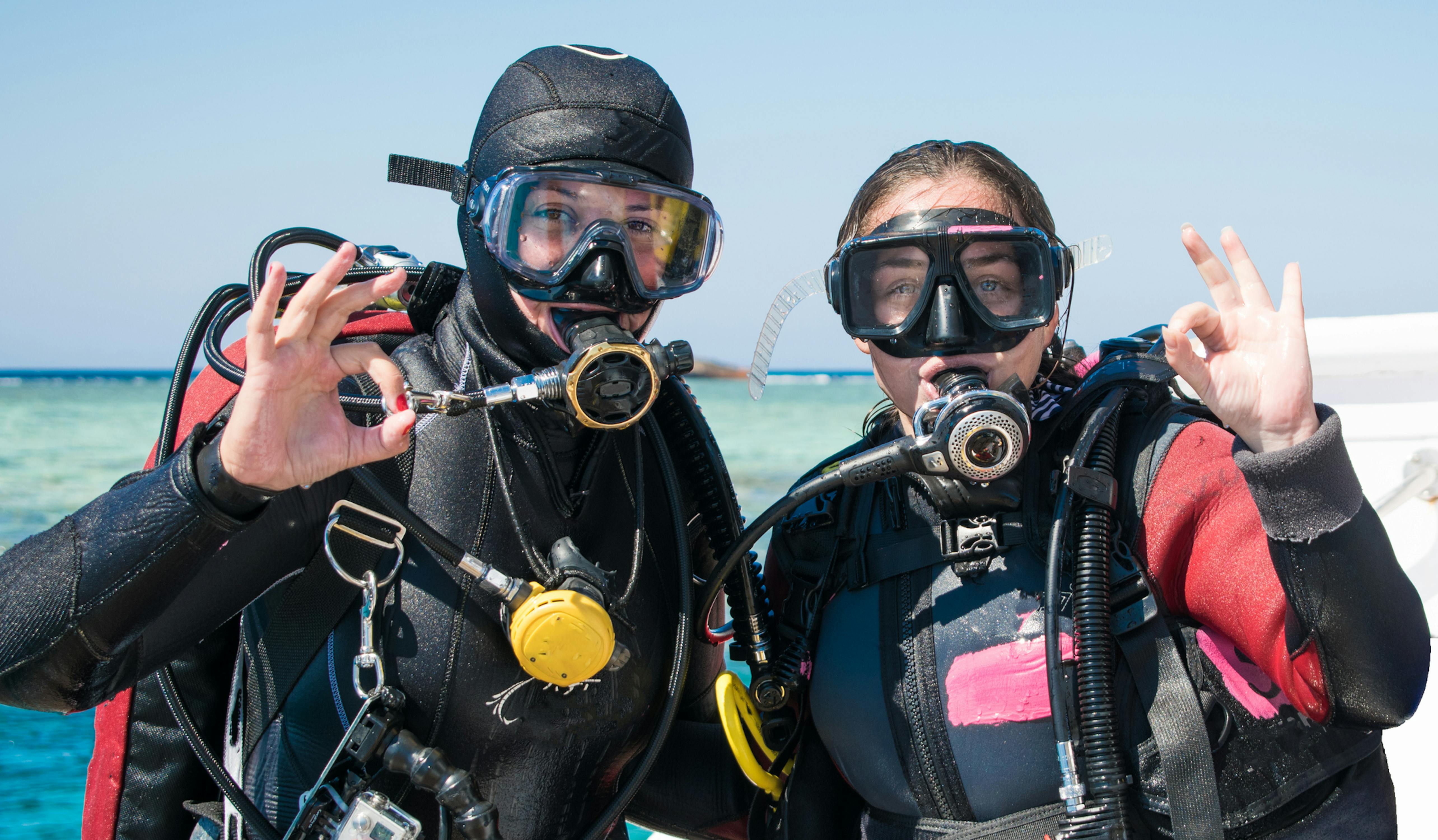Free Shipping on orders of $49+ | Signup for Direct Rewards
Free Shipping on orders of $49+ | Free Store Pickup | Signup for Direct Rewards
Free Shipping on orders of $49+ | Signup for Direct Rewards
Free Shipping on orders of $49+ | Free Store Pickup | Signup for Direct Rewards

As summer winds down and cooler months roll in, it’s time to start thinking about wetsuit season. While Florida divers are lucky enough to enjoy year-round diving, even our southern waters can dip into the low 70s, making the right wetsuit thickness essential for comfort and safety. If you’re planning dives in the Atlantic or the Gulf of America, you’ll want to be prepared with quality thermal protection to make every dive enjoyable.
Feeling a morning chill in the air doesn’t necessarily mean it’s time to pull out your 5mm wetsuit. Water temperatures change more slowly than air, which is why checking current dive conditions before heading out is so important. A sunny 65° day might still mean water in the high 70s.
The golden rule: comfort equals safety. If you’re unsure about which wetsuit to bring, layering is a great option. A 3mm wetsuit paired with a 2mm dive vest and hood offers flexibility—you can always shed a layer if you get too warm. Don’t forget add-ons like neoprene gloves, boots, and even a lip shield to stay extra cozy underwater.
Pro Tip: Before the season kicks off, check your wetsuit for tears or punctures. Need help choosing? See our guide: Everything You Ever Wanted to Know About Wetsuits. Want to make your gear last longer? Don’t miss 10 Tips for Wetsuit Care.
When choosing a wetsuit, it’s important to match wetsuit thickness to the water temperature. Here’s a quick breakdown:
Full wetsuits provide maximum warmth with full-body coverage, while shorty wetsuits (short sleeves and legs) are great for warmer waters and extra mobility. You can even layer a shorty under a full suit for added insulation in cold conditions.

If you’ve ever been diving and suddenly hit a “cold spot,” you’ve experienced the thermocline, a sharp drop in temperature between layers of water. This is common in deeper dives or when swimming through shifting currents. Planning ahead with the right wetsuit, gloves, and hood can make all the difference in staying comfortable when temperatures shift unexpectedly.
The chill doesn’t stop when you surface. Even in Florida, climbing out of the water into cool air can leave you shivering fast. Always pack warm, dry clothes, a towel Poncho, or a hoodie for after your dive. A dry bag is also a lifesaver for keeping your gear warm and ready on the boat or beach.
With the right wetsuit, thermal layers, and post-dive gear, you can enjoy cold water diving with confidence. Whether you’re exploring Florida reefs, braving the Pacific, or diving into the Gulf, being prepared ensures every adventure is warm, safe, and unforgettable.
How do I stay warm while diving in cold water?
Staying warm involves using appropriate thermal protection such as a wetsuit with high insulation properties. It’s also important to wear a hood, gloves, and boots. Staying active and keeping your dive times moderate can also help prevent heat loss.
What are the risks associated with cold water diving?
Risks include hypothermia, reduced dexterity due to cold, and increased air consumption. Cold water can also affect buoyancy control and visibility. Proper training and equipment are essential to mitigate these risks.
How do cold water temperatures affect my dive gear?
Cold water can affect the performance of dive gear, including making it stiffer and harder to manage. It can also impact the functionality of regulators and other equipment, so regular maintenance and checking equipment before the dive are crucial.
What should I do if I feel cold during a dive?
If you start feeling cold, signal to your dive buddy or guide and consider aborting the dive if necessary. It’s important to end the dive safely and warm up as soon as possible after surfacing.
How does cold water affect my air consumption?
Cold water can increase air consumption as the body works harder to maintain core temperature, and the colder temperatures can cause a diver to breathe more rapidly. This can lead to quicker depletion of air supply.